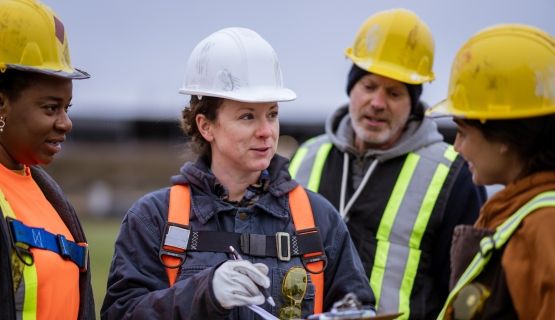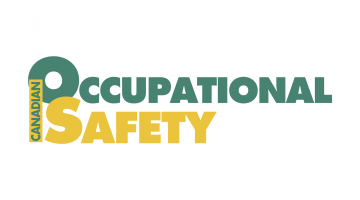Illness/injury prevention
IWH has a long history of conducting research to provide practical guidance to employers, workers, OHS professionals and regulators about what works and what doesn’t in injury or illness prevention. This research targets the injury and illness prevention practices of workplaces, as well as the programs developed by governments, health and safety associations and others to support and motivate workplaces to adopt effective practices.
Featured

At Work article
Differences in firm-level AI use for health and safety
To what extent are Canadian workplaces using artificial intelligence (AI) to help support workers’ health and safety? And what do these workplaces have in common? An IWH study surveyed firms across Ontario and British Columbia to find out.
Published: October 8, 2025

Impact case study
Saskatchewan’s construction safety group uses IWH tool to improve safety culture
This case study details how the Saskatchewan Construction Safety Association (SCSA) members have been analyzing IWH-OPM scores to adjust their safety practices and how SCSA has been using the data to tailor their outreach.
Published: February 10, 2025

At Work article
OPM follow-up questions now available to help firms act on leading indicator scores
IWH and Ontario's health and safety associations collaborate to create follow-up questions to IWH-OPM score results.
Published: April 2016

IWH in the media
Managing your OHS program: A case study on breakthrough changes in safety
Past research has identified the characteristics of firms that perform poorly or well with respect to work-related injury and illness prevention, but it hasn’t shown what it takes to go from one category to the other. A study by researchers at the Institute for Work & Health aimed to help fill that gap.
Published: OHS Insider, April 2016

IWH in the media
New IWH study looks at why companies make big improvements
Why do companies make changes in their OHS programs, safety rules, safety culture, etc., especially big improvements? And what motivates companies that were low performers in health and safety to take steps to become good performers?
Published: OHS Insider, March 2016

IWH in the media
External influences motivate firms to improve OHS performance
When workplaces make large improvements in occupational health and safety, it seems some type of external influence helps bring internal factors into play, according to a study by the Institute for Work & Health in Toronto.
Published: Canadian Occupational Safety Newswire, March 2016

IWH in the media
External factors influence improvements in workplace safety performance: IWH study
When workplaces make large improvements in occupational health and safety (OHS), it seems some type of external influence helps bring three internal factors into play: an organizational motivation to take action in OHS, the introduction of new OHS knowledge, and an engaged health and safety champion who integrates that knowledge into the organization.
Published: Canadian Chiropractor, March 2016
Journal article
Journal article
Individual, occupational, and workplace correlates of occupational health and safety vulnerability in a sample of Canadian workers
Published: American Journal of Industrial Medicine, January 2016
Journal article
Journal article
Effectiveness of workplace interventions in the prevention of upper extremity musculoskeletal disorders and symptoms: an update of the evidence
Published: Occupational and Environmental Medicine, January 2016
Project
Project
Central nervous system agents and the risk of workplace injury and death: a systematic review
IWH is leading a systematic review to determine the level and quality of research evidence on the association between workers’ use of agents that act on the central nervous system (e.g. opioids, cannabis) and the risk of workplace injury, reinjury, near misses and death, including outcomes affecting co-workers and others in the immediate workplace.
Status: Completed 2019

Tools and guides
IWH Organizational Performance Metric
This evidence-based, eight-item questionnaire helps organizations assess and improve their health and safety performance by indicating where improvements might be made to health and safety policies and practices in order to prevent injuries or illnesses from occurring.
Published: January 2016
Project
Project
Implementation of workplace violence legislation in Ontario hospitals
IWH researchers sought to find out what helps and what hinders the successful implementation of legislated workplace violence prevention measures in Ontario’s acute-care hospitals.
Status: Completed 2017